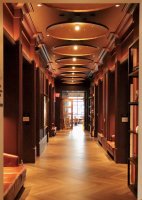That is almost fast enough to catch the dog eating a treat!I’m still surprised at that 1/16000 shutter speed!
Wonder what I could use that for?
Upvote
0
That is almost fast enough to catch the dog eating a treat!I’m still surprised at that 1/16000 shutter speed!
Wonder what I could use that for?


This is a really, really dumb argument. The 80D shot 24p. The 70D shot 24p. The 60D shot 24p. To not include it is beyond insanity with no justification, because there is no end user who needs 24p and is going to go with a Cine line camera (all at $2k+ and most at $5k+) over a 90D just to get it. They are going to go Sony, Panasonic, Nikon, etc. Its not 10-bit 4:2:2 or 4k60 or C-log or some feature that is truly a cine feature that differentiates...its like not including RAW in a stills camera.It’s really not an issue. If you want a camera that shoots 24p. Don’t buy a 90D. It’s really as simple as that. There are any number of cameras from other manufacturers that do. I doubt canon will care you buy either way. Yes 24p is dominant in movies but it’s not like Avengers was shot on 80D’s now is it?
Also as I understand it, the 90D being released doesn’t automatically brick all 70D/ 80D cameras out there. If you’re shooting 24p on either of them right now that’s awesome. Don’t buy this. Keep what you have and keep on trucking.
Do you understand that the sensor heat isn't the primary problem? So they can do full sensor readout to make 1080p no problem, but doing full sensor readout to make 2160p is a problem? It's the same exactly data from the sensor in both cases yet it's different. The sensor just makes extra heat when it knows the user wants 4k from the data. Got it!Phones? What phone has an APS-C or FF35mm sensor? Or do you not understand that heat issues relate to sensor size? It was the A7RII and A7SII that had overheating issues with 4K, not sony sensors in phones.
I didn't say that. If you understood where the heat actually comes from you'd understand the comment.So you genuinely think its not just DSLRs/MILCs that compete with cine cameras, but phones too... Wow. Good job.
Please tell us more lies. Youve got a knack for it. Which Canon cameras have HDR video?Of course. Canon crippled my 1D X by not including in-camera HDR even though the all their other ILCs and even several PowerShots offered that as-close-to-free-as-possible feature. I guess they excluded it to force me to buy the more expensive...oh, wait.
there is no end user who needs 24p and is going to go with a Cine line camera (all at $2k+ and most at $5k+) over a 90D just to get it. They are going to go Sony, Panasonic, Nikon, etc.
The shutter doesn't rotate. These cameras have an electronic shutter when they shoot video. I know what the terms mean. Kit's attempt to tie them to some distinction between p24 and p30 makes no sense. The target shutter angle for video is generally 180 degrees. It doesn't have to be but it can't be larger than 360 degrees. p30 with a larger shutter angle doesn't make it the same as p24 with a ~180 degree shutter.As the shutter rotates at a given rate (p30, p24, etc.), its angle dictates how long the exposure is per rotation.
They are both independent variables, but they significantly affect the look of what is recorded.
The image would have a completely different shutter speed and motion blur.It would look very strange and nothing like 24p.But p120 to p24 isn't a conversion. It is just picking every 5th frame in the sequence. should be no jitter for instance
As a macro shooter that only thing that I gain from upgrading my APS-C camera (currently using the 80D) is dynamic range. But I'm also wondering what the trade off is going to be between more pixels and potentially more diffraction (since the pixels are smaller). Can an increase in resolution be more beneficial that an increase in diffraction, provided my MP-E 65mm can out resolve the sensor? Getting this kind of image quality now with my single frame, uncropped, shot at F11 macro:
Leaf Cutter VII by John Kimbler, on Flickr
Well I'm not sure about nothing like but it would look different. Don't forget 24p played on 60Hz is cadenced at 3:2, so one frame is shown three times and the next shown twice. The 'cinematic look' is vastly overstated especially when forced into a sampling rate very different from 24 individual actual frames shown once each second.The image would have a completely different shutter speed and motion blur.It would look very strange and nothing like 24p.
Personally, I think waiting for the real announcement would be the right call on this. A leaked spec sheet from Australia where TV is broadcast at 50Hz and 25p would be the most "cinematic" format doesn't seem like the best source of info to lose one's mind over. Just my opinion.
I couldn't care less if the 90D and M6 II sells fantastic or terribly. However, it's just another canary in the coal mine that shows Canon still isn't adapting to the new market it and all the other camera makers find themselves in.Not saying lts not an odd decision on canon’s part but doesn’t effect my life either way. Why does it matter so much to you what camera others buy? Do you personally need 24p and that’s why you’re so angry?
I'm not going to debate the difference between 24, 25, 30 fps. But 120 fps is a 5 times faster shutter speed. The blur of moving objects is very different. This isn't a theoretical thing. It looks different. Never mind that fact that you have to pump a ton more light on a scene to get the same exposure.Well I'm not sure about nothing like but it would look different. Don't forget 24p played on 60Hz is cadenced at 3:2, so one frame is shown three times and the next shown twice. The 'cinematic look' is vastly overstated especially when forced into a sampling rate very different from 24 individual actual frames shown once each second.
I trialled Noise Ninja at your suggestion and it is very good and a damn sight faster than DxO Prime. But, I was able to get PL 2 to be just as good, and with an 8 core hyperthreaded new MacBook Pro on order I'll stick with DxO and also use isos at your levels.I'd love to know what converter people who ask this question are using...
(And if it's about the old and utterly discredited meme that more pixels = more noise, just no...)
This is 10,000 ISO from my 7D Mk II (1000mm handheld, too), converted in Photo Ninja (way better than DxO Photolab - and a damn' sight faster), with no additional NR in PP (click on it for bigger):
I'm rarely below 1600 ISO, and with Photo Ninja I consider 400 ISO and 4000 ISO to be same thing in terms of how the end result will look...
Agreed: what people typically talk about these days when discussing “rolling shutter” centers on smearing caused by a line by line read or the passage of a shutter plane shutter when the subject moves relative to the sensor/film.The shutter doesn't rotate. These cameras have an electronic shutter when they shoot video. I know what the terms mean. Kit's attempt to tie them to some distinction between p24 and p30 makes no sense. The target shutter angle for video is generally 180 degrees. It doesn't have to be but it can't be larger than 360 degrees. p30 with a larger shutter angle doesn't make it the same as p24 with a ~180 degree shutter.
Rolling shutter has nothing to do with shutter angle. It's an undesireable artifact due to the lack of a global electronic or mechanical shutter.
Makes no sense to me why they're suddenly giving an actual vs effective pixels number. Defitely don't remember seeing that before on Canon stuff, or at least not advertised do blatantly. Do not remember seeing effective vs actual pixels when researching and buying any of my current Canon cameras.
Also why is there such a large difference between effective and actual? You only need a 1 pixel border around the edge to correctly debayer, right? The large difference almost made me think IBIS might be in there or something weird.
This is a really, really dumb argument. The 80D shot 24p. The 70D shot 24p. The 60D shot 24p. To not include it is beyond insanity with no justification, because there is no end user who needs 24p and is going to go with a Cine line camera (all at $2k+ and most at $5k+) over a 90D just to get it. They are going to go Sony, Panasonic, Nikon, etc. Its not 10-bit 4:2:2 or 4k60 or C-log or some feature that is truly a cine feature that differentiates...its like not including RAW in a stills camera.
That said, the spec list is almost certainly incomplete. The M6 Mark II shows it having 1080/120 in the 2nd page of the brochure, but that mode is not listed in the spec list (instead just showing 1080/30). Even by Canon standards, leaving off 4k/24 and 1080/24 for the top end APS-C camera would be a crazy differentiation with no justification. At least with the RP it was their lowest model and it had 4k/24.
hello Alan 2 DxO Prime noise reduction questions if you will:I trialled Noise Ninja at your suggestion and it is very good and a damn sight faster than DxO Prime. But, I was able to get PL 2 to be just as good, and with an 8 core hyperthreaded new MacBook Pro on order I'll stick with DxO and also use isos at your levels.
